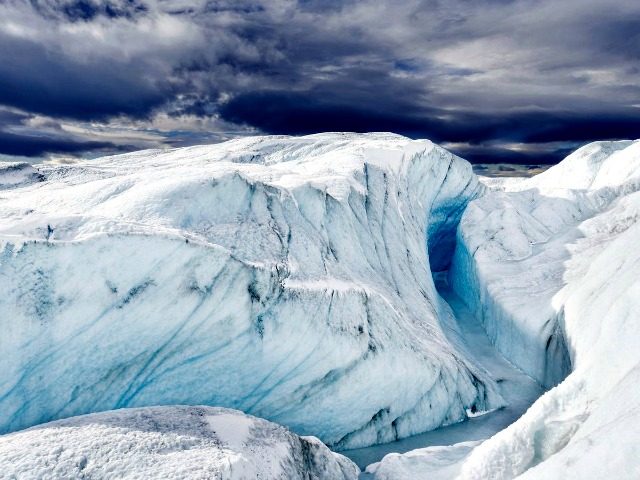Alarmist news media have blamed the closing of a Greenland airport on manmade global warming, declaring Friday that the airfield is the “latest victim of climate change.”
Euronews announced that Greenland’s Kangerlussuaq Airport will end civilian flights within five years “due to climate change,” adding that runways are cracking because of the melting of the underlying permafrost.
Permafrost refers to a thick subsurface layer of soil that remains frozen solid throughout the year in certain very cold regions of the earth.
Kangerlussuaq Airport, the nation’s chief hub, had some 11,000 plane landings and departures last year, and authorities have announced their intention to build a new airport from scratch.
“They are constructing a new airport in Nuuk and in the north,” said airport manager Peter Høgh, “and the Danish Airforce will take over responsibility for this airport.”
Some 80 percent of the surface of Greenland is covered in ice sheet, but “global warming is drastically reshaping Greenland, causing the ice sheet to melt at a faster rate than previously thought,” Euronews said.
While the mainstream media are quick to attribute all weather-related phenomena to anthropogenic “climate change,” many serius climate scientists exercise greater moderation in their analyses.
As the World Meteorological Organization (WMO) has noted, many recent climatological events and trends “can be explained by the natural variability of the climate system,” without excluding an indeterminate influence from atmospheric concentrations of greenhouse gases. In the same report, the WMO said that researchers have not yet been able to ascertain “the respective roles being played by climate variability and human-induced climate change.”
Furthermore, many climate scientists have recognized the actual impossibility of correlating specific meteorological events to “global warming.”
As Nature magazine explained in 2012, “climate attribution” — the attempt to link singular weather events to manmade climate change — “rests on a comparison of the probability of an observed weather event in the real world with that of the ‘same’ event in a hypothetical world without global warming.”
As critics have observed, such attribution claims “are unjustifiably speculative, basically unverifiable and better not made at all.”
Unfortunately, many climate alarmists are not so circumspect in their reports, and in recent years, “climate change” has been blamed for everything from a slump in coffee production to devastating hurricanes to a drop in the population of Hawaiian monk seals to the decimation of migratory songbirds and even colder winters.
Anthropogenic climate change has become the scapegoat for problems ranging from the mass deaths of reindeer to the creation of “ghost forests” along the U.S. Atlantic seaboard.
Climate furor has spread to celebrities as well, and in 2018 Stevie Wonder declared that climate change had caused the cancer that killed legendary soul singer Aretha Franklin, while suggesting that climate change skeptics share the responsibility for her death.
In 2008, veteran Loch Ness monster hunter Robert Rines gave up his search for Nessie after 37 years at the age of 85, saying that the monster had probably been killed by global warming.

COMMENTS
Please let us know if you're having issues with commenting.